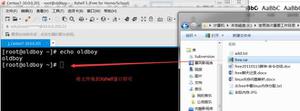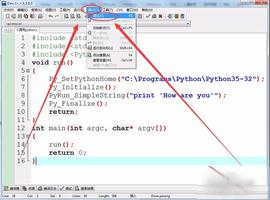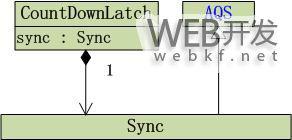python多线程几种方法实现 python多线程编程

Python多线程编程中常用方法:
1、join()方法:如果一个线程或者在函数执行的过程中调用另一个线程,并且希望待其完成操作后才能执行,那么在调用线程的时就可以使用被调线程的join方法join([timeout]) timeout:可选参数,线程运行的最长时间
2、isAlive()方法:查看线程是否还在运行
3、getName()方法:获得线程名
4、setDaemon()方法:主线程退出时,需要子线程随主线程退出,则设置子线程的setDaemon()
Python线程同步:
(1)Thread的Lock和RLock实现简单的线程同步:
import threadingimport time
class mythread(threading.Thread):
def __init__(self,threadname):
threading.Thread.__init__(self,name=threadname)
def run(self):
global x
lock.acquire()
for i in range(3):
x = x+1
time.sleep(1)
print x
lock.release()
if __name__ == \'__main__\':
lock = threading.RLock()
t1 = []
for i in range(10):
t = mythread(str(i))
t1.append(t)
x = 0
for i in t1:
i.start()
(2)使用条件变量保持线程同步:
# coding=utf-8import threading
class Producer(threading.Thread):
def __init__(self,threadname):
threading.Thread.__init__(self,name=threadname)
def run(self):
global x
con.acquire()
if x == 10000:
con.wait()
pass
else:
for i in range(10000):
x = x+1
con.notify()
print x
con.release()
class Consumer(threading.Thread):
def __init__(self,threadname):
threading.Thread.__init__(self,name=threadname)
def run(self):
global x
con.acquire()
if x == 0:
con.wait()
pass
else:
for i in range(10000):
x = x-1
con.notify()
print x
con.release()
if __name__ == \'__main__\':
con = threading.Condition()
x = 0
p = Producer(\'Producer\')
c = Consumer(\'Consumer\')
p.start()
c.start()
p.join()
c.join()
print x
(3)使用队列保持线程同步:
# coding=utf-8import threading
import Queue
import time
import random
class Producer(threading.Thread):
def __init__(self,threadname):
threading.Thread.__init__(self,name=threadname)
def run(self):
global queue
i = random.randint(1,5)
queue.put(i)
print self.getName(),\' put %d to queue\' %(i)
time.sleep(1)
class Consumer(threading.Thread):
def __init__(self,threadname):
threading.Thread.__init__(self,name=threadname)
def run(self):
global queue
item = queue.get()
print self.getName(),\' get %d from queue\' %(item)
time.sleep(1)
if __name__ == \'__main__\':
queue = Queue.Queue()
plist = []
clist = []
for i in range(3):
p = Producer(\'Producer\'+str(i))
plist.append(p)
for j in range(3):
c = Consumer(\'Consumer\'+str(j))
clist.append(c)
for pt in plist:
pt.start()
pt.join()
for ct in clist:
ct.start()
ct.join()
生产者消费者模式的另一种实现:
# coding=utf-8import time
import threading
import Queue
class Consumer(threading.Thread):
def __init__(self, queue):
threading.Thread.__init__(self)
self._queue = queue
def run(self):
while True:
# queue.get() blocks the current thread until an item is retrieved.
msg = self._queue.get()
# Checks if the current message is the "quit"
if isinstance(msg, str) and msg == \'quit\':
# if so, exists the loop
break
# "Processes" (or in our case, prints) the queue item
print "I\'m a thread, and I received %s!!" % msg
# Always be friendly!
print \'Bye byes!\'
class Producer(threading.Thread):
def __init__(self, queue):
threading.Thread.__init__(self)
self._queue = queue
def run(self):
# variable to keep track of when we started
start_time = time.time()
# While under 5 seconds..
while time.time() - start_time < 5:
# "Produce" a piece of work and stick it in the queue for the Consumer to process
self._queue.put(\'something at %s\' % time.time())
# Sleep a bit just to avoid an absurd number of messages
time.sleep(1)
# This the "quit" message of killing a thread.
self._queue.put(\'quit\')
if __name__ == \'__main__\':
queue = Queue.Queue()
consumer = Consumer(queue)
consumer.start()
producer1 = Producer(queue)
producer1.start()
使用线程池(Thread pool)+同步队列(Queue)的实现方式:
# A more realistic thread pool example# coding=utf-8
import time
import threading
import Queue
import urllib2
class Consumer(threading.Thread):
def __init__(self, queue):
threading.Thread.__init__(self)
self._queue = queue
def run(self):
while True:
content = self._queue.get()
if isinstance(content, str) and content == \'quit\':
break
response = urllib2.urlopen(content)
print \'Bye byes!\'
def Producer():
urls = [
\'http://www.python.org\', \'http://www.yahoo.com\'
\'http://www.scala.org\', \'http://cn.bing.com\'
# etc..
]
queue = Queue.Queue()
worker_threads = build_worker_pool(queue, 4)
start_time = time.time()
# Add the urls to process
for url in urls:
queue.put(url)
# Add the \'quit\' message
for worker in worker_threads:
queue.put(\'quit\')
for worker in worker_threads:
worker.join()
print \'Done! Time taken: {}\'.format(time.time() - start_time)
def build_worker_pool(queue, size):
workers = []
for _ in range(size):
worker = Consumer(queue)
worker.start()
workers.append(worker)
return workers
if __name__ == \'__main__\':
Producer()
另一个使用线程池+Map的实现:
import urllib2from multiprocessing.dummy import Pool as ThreadPool
urls = [
\'http://www.python.org\',
\'http://www.python.org/about/\',
\'http://www.python.org/doc/\',
\'http://www.python.org/download/\',
\'http://www.python.org/community/\'
]
# Make the Pool of workers
pool = ThreadPool(4)
# Open the urls in their own threads
# and return the results
results = pool.map(urllib2.urlopen, urls)
#close the pool and wait for the work to finish
pool.close()
pool.join()
以上是 python多线程几种方法实现 python多线程编程 的全部内容, 来源链接: utcz.com/z/388269.html







